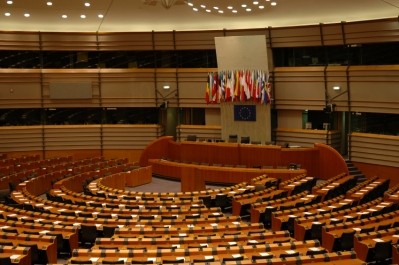Dutch industry-backed nutrition label ticked off with mounting criticism

The Dutch consumer rights group, Consumentenbond, has launched a campaign ‘Down with the tick’ (the 'Vinkje' in Dutch) and wants to see the label removed from products.
It claims the tick is confusing for consumers.
A recent Consumentenbond survey of over 1,000 people found 85% did not know the difference between the green tick - applied to basic healthy staples, such as low-salt wholemeal bread - and the blue logo, reserved for 'healthier versions' of products found at the top of food pyramids, such as low calorie snacks.
Consumers commonly – but mistakenly – believed the absence of a tick meant a product was unhealthy, said Consumentenbond.
“There are thousands of products in the grocery store without finding the tick that are just as healthy - even healthier - than those with the tick."
The Choice Foundation, the group that develops and manages the tick, disagrees.
It commissions a survey every year by market research company GFK, finding over 90% of consumers recognise the logo and 70% link it to nutrition.
Who uses the label?
Companies that have signed up to use the tick include Unilever, Friesland Campina, Weetabix, German discounter Lidl and and Dutch private label brand Albert Heijn.
'The tick is not for sale'
Another sticking point for Consumentenbond is that the tick is a private - and therefore privately-funded - initiative.
It says many consumers assume the label is government-led, and are unaware industry itself is actively involved in developing and managing the tick, and that companies pay to be a member and use the logo.
For small companies this can be a few thousand euros, much more for multinationals, according to the watchdog.
In a statement in Dutch published yesterday on its website, the Choices Foundation refuted any accusations of industry bias.
“The tick was founded as a private initiative, following a call by the World Health Organisation (WHO) and the Ministry of Health. The tick is obviously not for sale. Participation in this certification system costs money, as is the case for other labelling schemes,” it said.
“The annual membership fee is mainly used for communication, research and administration.”
Although industry-led, the scheme has been approved by both the Dutch government and the European Commission.
The consumer watchdog also criticises the fact that many ticked products contain “generous amounts” of salt, sugar or saturated fat.
Chocomel skimmed chocolate milk bears a green tick yet contains the equivalent of six sugar lumps per 250 ml glass.
The Choice Foundation says its nutrition criteria are set by an independent scientific committee, headed by professor in sensory science and eating behaviour and chairman of human nutrition at Wageningen University, Kees de Graaf.
The Voedingscentrum Nutrition Centre, a 100% government-funded body providing science-based nutrition advice to consumers, is also a member.
These criteria (available here in Dutch) are reviewed every four years, and product compliance with the criteria is verified by an independent review body.
Elsewhere in Europe…
The Choice Foundation said it took a conscious decision to use a positively-rated system because this is the best incentive for industry to improve products.
“As a means to foster product innovations, we know of no better system than a positive choice logo”.
But for its part, Consumentenbond is championing the British traffic light label as a “successful system” giving consumers “real choices”.
However the traffic light system has come under fire of its own, provoking the ire of food producers whose products are branded with a negative red label for high salt, fat or sugar even if the product in question is intended to be eaten in small amounts, such as parmesan cheese.
Meanwhile research conducted by Canadean found that of the 2,200 people surveyed, nearly one fifth (19%) thought the traffic light labels were confusing, although this research was conducted in 2012 and consumer awareness and familiarity may have grown since then.
Across the Channel, the French food safety agency (ANSES) recently studied two types of nutrient profiling systems – five class and four class – before concluding that neither was ideal in helping people to easily understand a food’s healthiness, although two will be test piloted on the French market.
In a similar vein to the Dutch tick, Scandinavian countries Sweden, Norway, Denmark and Iceland use a positive 'keyhole' labelling
system to earmark healthy food choices for consumers.
Launched in Sweden in 1989, it does not set minimum required levels of fat, sugar or salt, instead it picks out the healthiest in each product category allowing consumers to make the best choice from the products available.
The Scandinavian Keyhole system is 100% government funded and companies do not pay to bear the logo, dietitian at Livsmedelsverket, the Swedish National Food Authority (NFA), Anette Jansson told FoodNavigator.
Consumentenbond’s survey can be read here (in Dutch).































